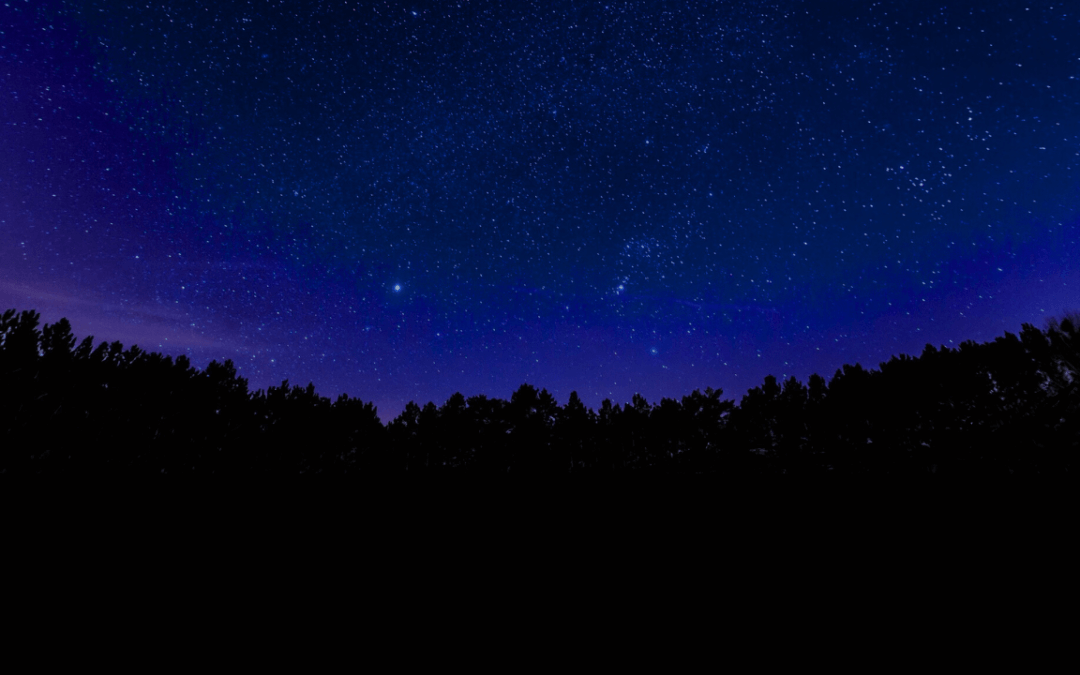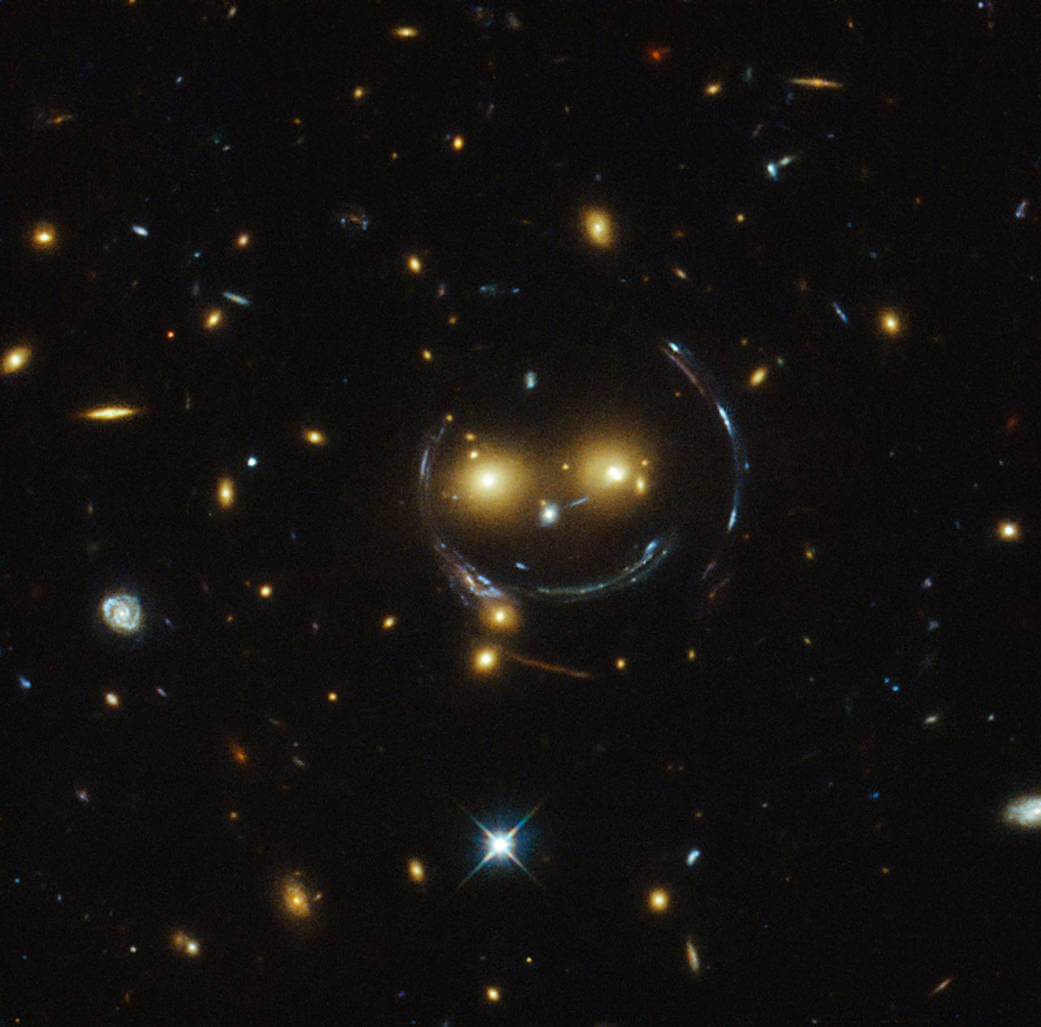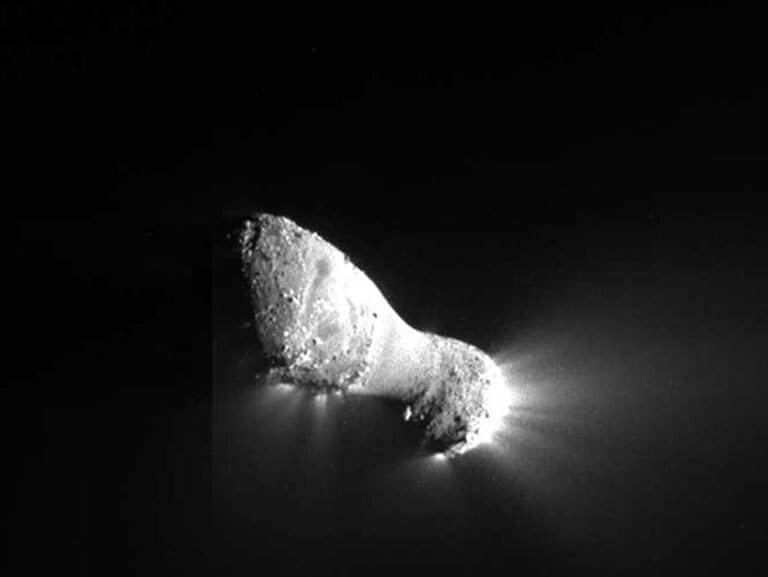A Year in Citizen Science: Unistellar Breaks Exoplanet Record
Read the 1st Blog in this Series
A Year in Citizen Science: Observers Break Record Watching JWST
Read the 2nd Blog in this Series
A Year in Citizen Science: Planetary Defense Rocks 2022
Read the 3rd Blog in this Series
The Unistellar Network is constantly expanding its capabilities and making new observations of far-off objects and cosmic spectacles from all around the world. In just 12 months during 2022, Citizen Scientists using their eVscopes or eQuinoxes observed ongoing space missions, exoplanets, comets, supernovae and much more, many of them right from their backyards!
Unistellar Network member observations, most made in the members’ spare time, are making a difference not only for astronomers, but in communities worldwide as observers spread their love of the night sky far and wide. Their work hasn’t gone unrecognized: among their many achievements, Unistellar observers were listed as coauthors on multiple scientific papers in 2022.
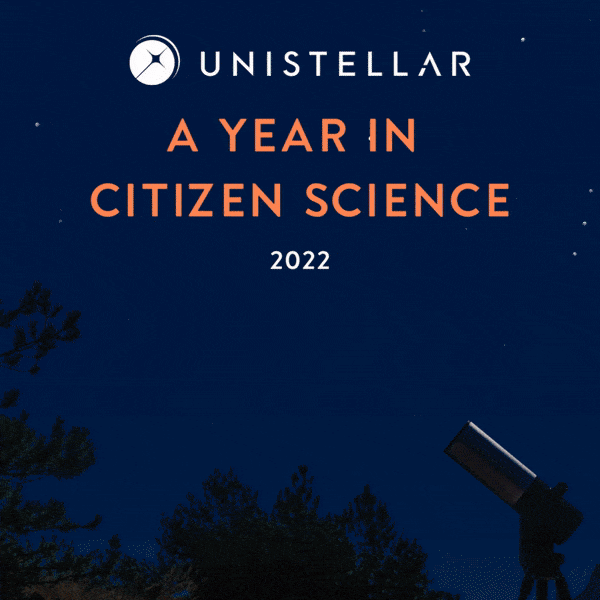
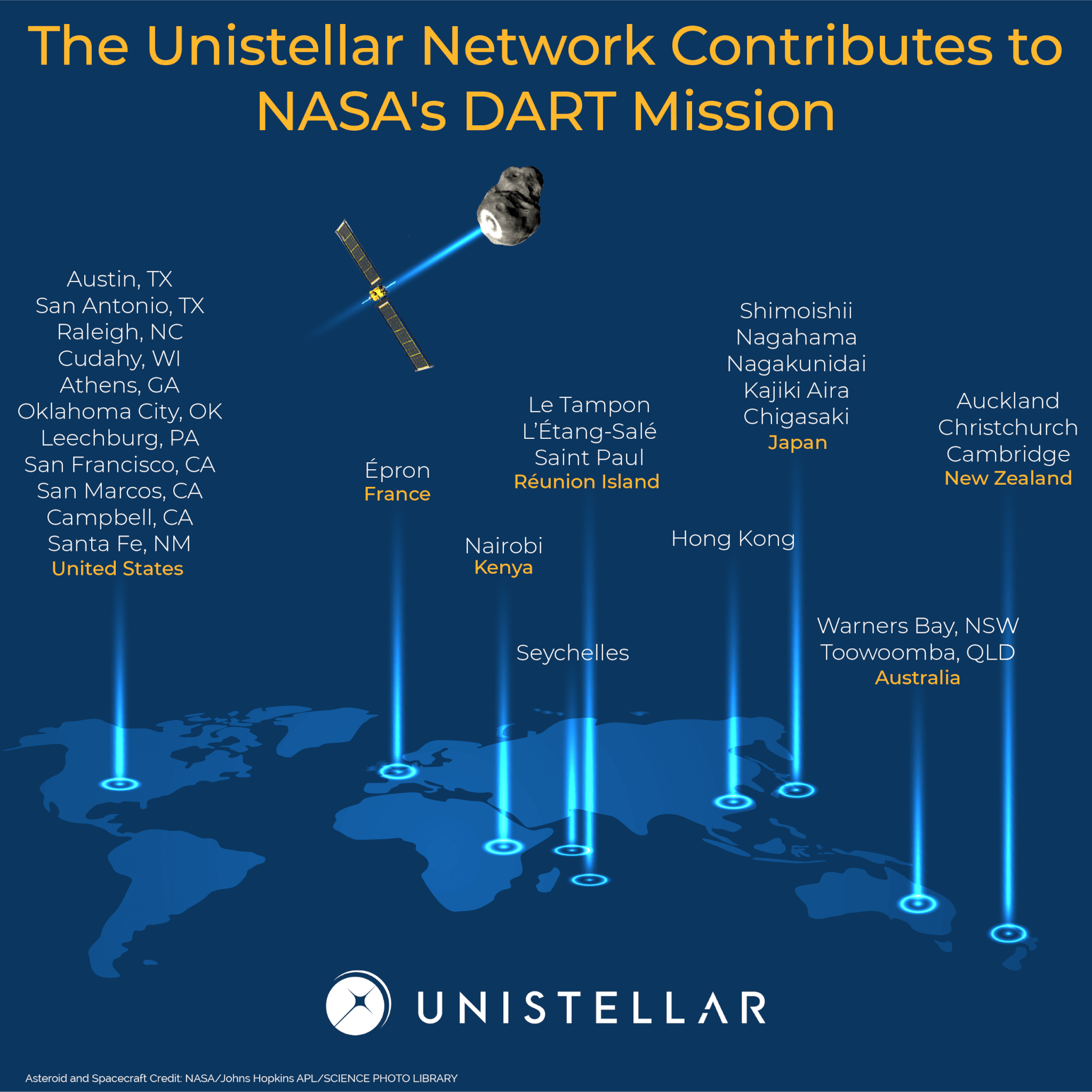
Citizen Science Success in 2022
Observers used their Unistellar Telescopes to catch an especially dramatic moment in space in September of 2022, when NASA’s Double Asteroid Redirection Test (DART) crashed a spacecraft into an asteroid to test humanity’s ability to divert incoming hazards. Citizen Astronomers watched the asteroid before, during, and after the impact to gather information about the collision. With the help of SETI Institute scientists, they are now listed as co-authors on a study appearing in the prestigious scientific journal Nature. But DART success wasn’t the only impressive citizen science result last year!
In 2022, Unistellar observers also participated in five NASA-sponsored exoplanet observation campaigns. They watched these exoplanets transit, or pass in front of their stars, which allows scientists to learn about the size, orbit and even composition of these distant worlds. Speaking of transits, Citizen Astronomers were again published in 2022 for their record breaking observations of the exoplanet Kepler-167e, which they watched for almost 32 hours!
Citizen Astronomers are also keeping a sharp eye out for potentially hazardous asteroids near Earth and contributing to Planetary Defense. In 2022, the Unistellar Network submitted 542 reports on 32 different asteroids to the Minor Planet Center (MPC), the official repository for near-Earth object data. That helps astronomers get a better idea of these objects’ orbits, and whether they might pose a threat to us (don’t worry, we’re safe for now!). These numerous observations made an imprint – the Unistellar Network is now submitting more data to the MPC than any other citizen science group.
However, it’s not all space rocks — Unistellar members also watched the JWST as it made its way to its home a million miles from Earth after launching in late 2021. With 145 observations over three months, Citizen Astronomers were the only group to track the space telescope throughout its journey and publish the results with the help of SETI Institute scientists. They even caught pivotal moments like course corrections and glints from the telescope’s mirrors unfolding. With more space missions to come in 2023, JWST is just the beginning for our citizen astronomers!

Calling All Citizen Scientists and Astronomy-Lovers
All told, Unistellar observers made more than 4,000 observations of over 650 unique targets in 2022, and made a huge impact on citizen science. And with our network growing, that number is only set to increase in 2023. With many exciting observation missions ahead of us this year, we could use your help. With the power of a Unistellar Telescope, every single observation counts, no matter when it happens or where it comes from. Your contribution, no matter how big or small, is useful!
Unistellar observers can be found on almost every continent, and they make and submit observations from backyards, city parks, and rooftops. They also often gather in our open Slack channel, where 1,300 users regularly gather to talk about citizen science and astronomy. Take it from our fantastic members – join our growing community and start doing meaningful science, today!
Darren R (Australia)
« Being involved in the DART impact research program was very exciting and rewarding. Working at the cutting edge of astronomical science with professional astronomers from the SETI Institute and citizen scientists in the Unistellar Network from all over the world has reinvigorated my passion for astronomy. The eVscope is simply amazing! »
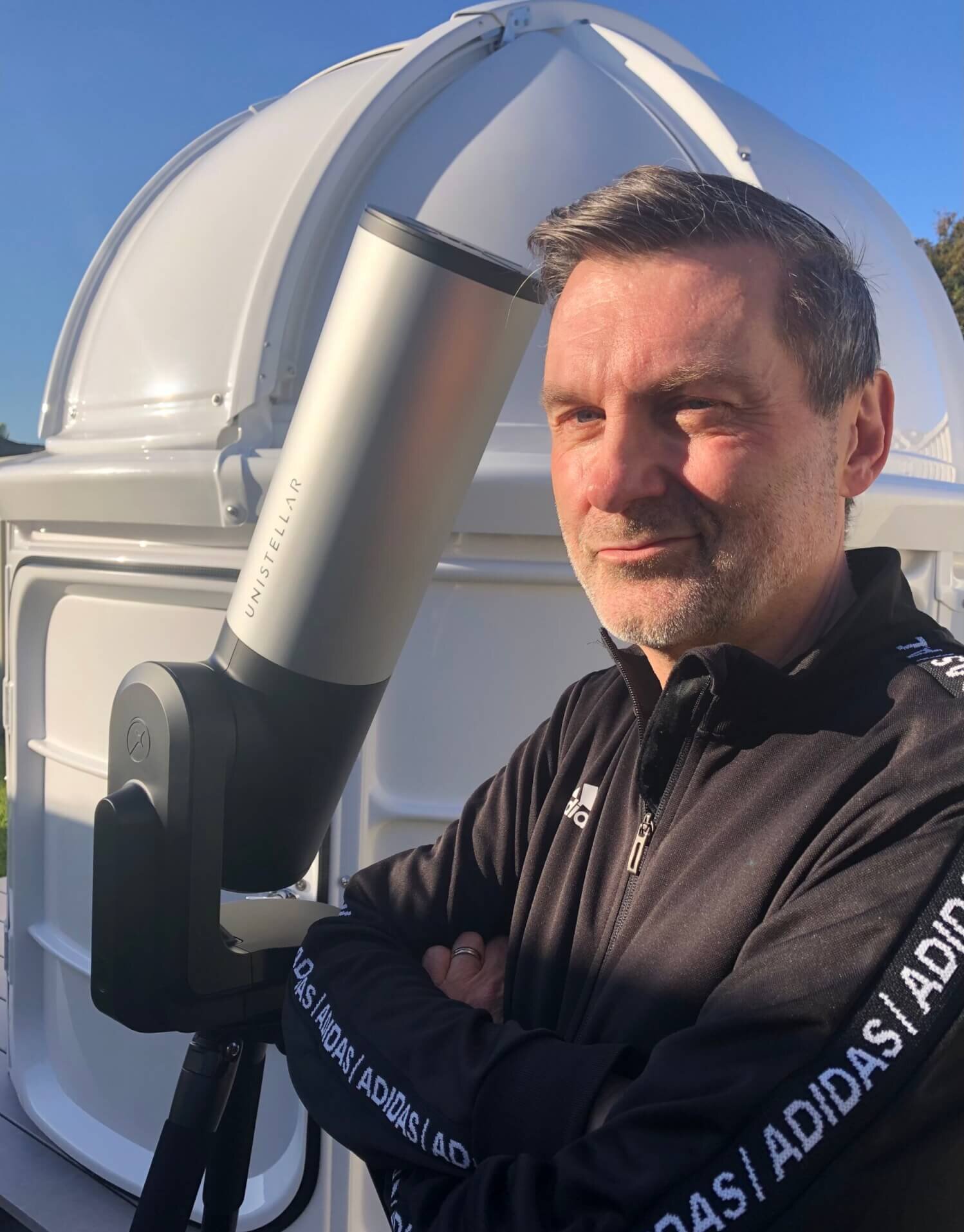
Patrick H (USA)
« As a community college instructor, I have been able to involve my students in authentic hands-on experiences using the telescope. Sharing observations as we were following the DART mission in our classroom gave everyone a tremendous boost to their enthusiasm and excitement for learning astronomy.«

Kendra S (USA)
“I have participated in several of Unistellar’s Citizen Science campaigns and it has been a great experience! I detected an asteroid occultation, took data to search for exoplanets, and even witnessed a bright flash of light from the JWST shortly after it launched.”
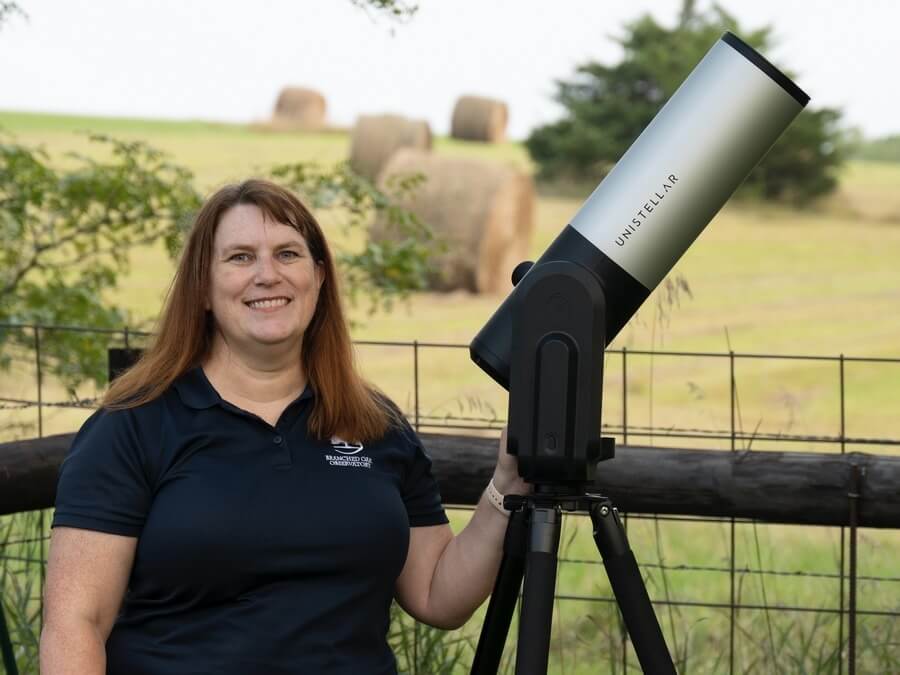
Below: Michael P (USA), Liouba and Niniane L (France), and Stefan W (USA) all participated in one or more NASA-sponsored exoplanet campaigns!
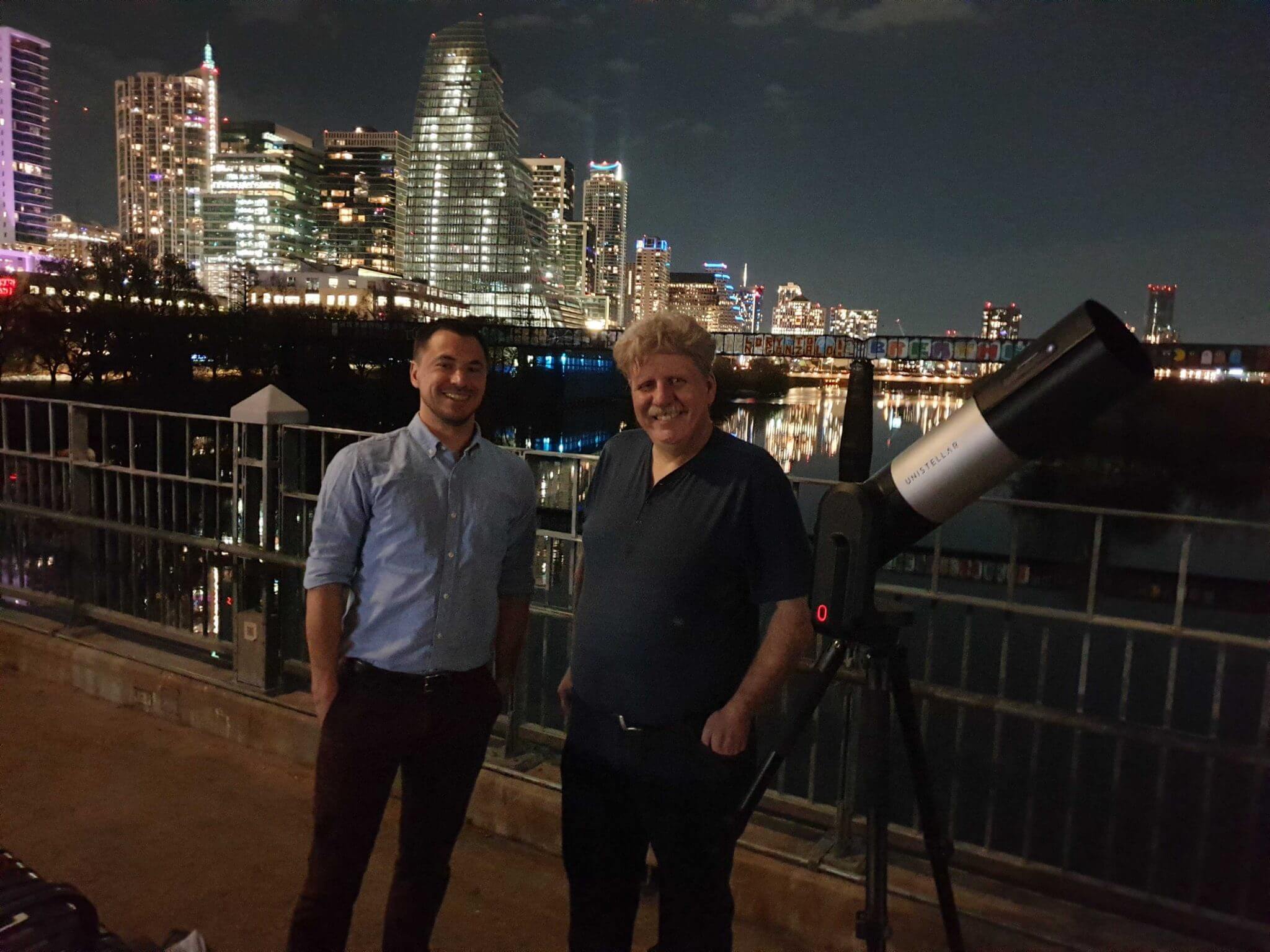
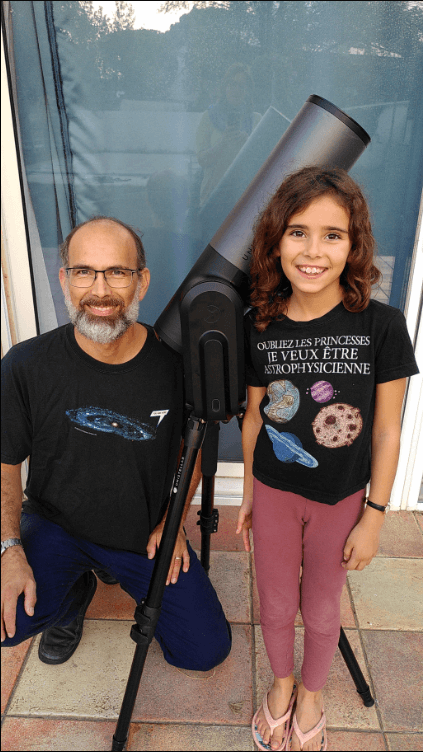
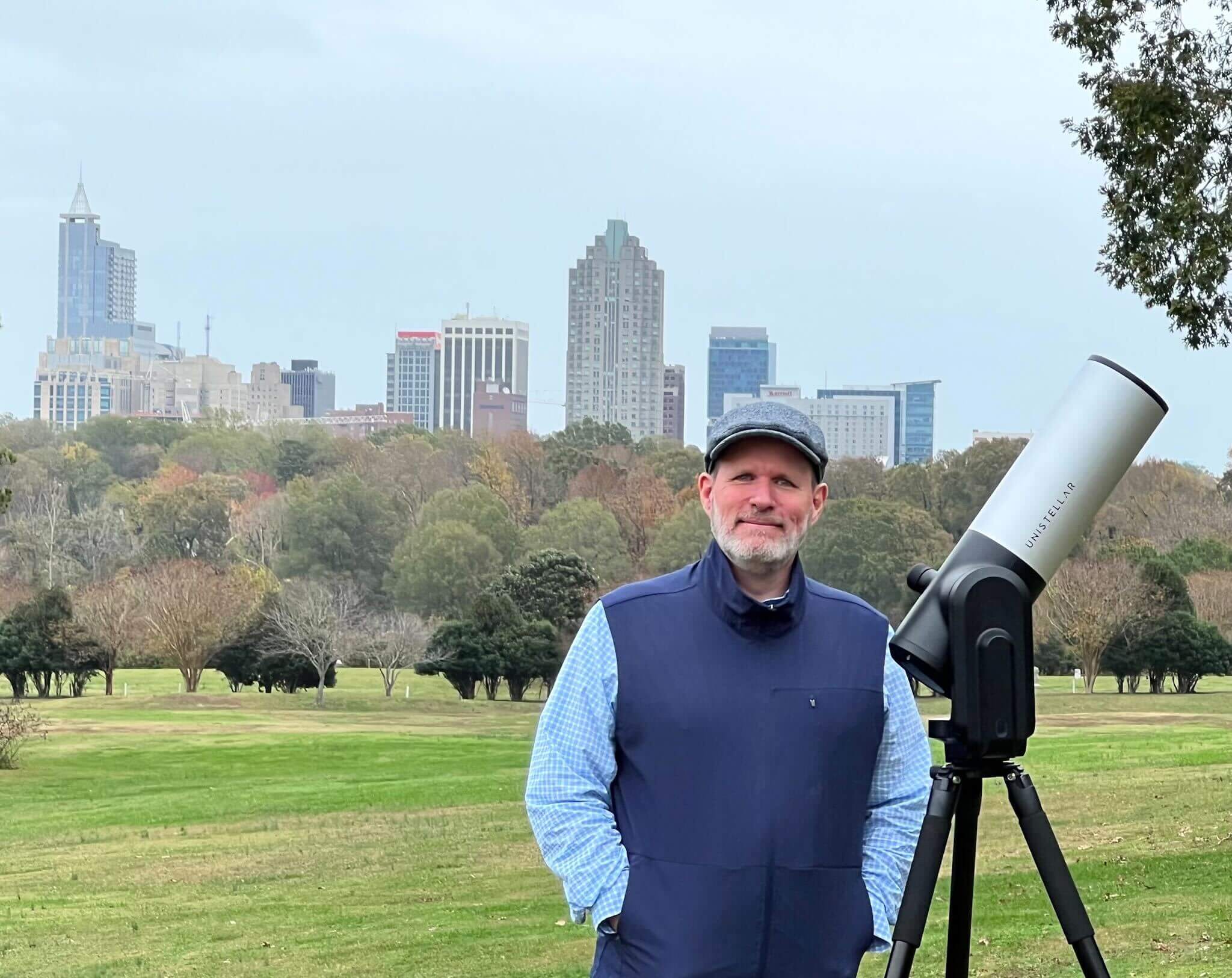
Further readings
3 raisons d’observer ce mois-ci
Sur Jupiter : Imaginez des lunes projetant leur ombre sur une planète géante. En ce moment, les lunes de Jupiter offrent un spectacle exceptionnel : des éclipses visibles même depuis des zones urbaines. Chaque passage d'une lune devant le Soleil crée une ombre qui danse sur la surface de Jupiter. Consultez notre article dédié pour ne rater aucun passage d'Io, Europe ou Ganymède.
La Nuits des Étoiles 2024
À l’occasion de la 34ème édition des Nuits des Étoiles, UNISTELLAR, renouvelle son partenariat avec l'Association Française d’Astronomie.
Unistellar Community Included In Multiple Scientific Papers
Did you know Unistellar Citizen Astronomers are often cited in published scientific papers? Find out how you can contribute too!
Nouvelle Mise à Jour de l’App Unistellar : Version 3.0
The latest Unistellar App Update, version V3.0, is now live. Explore a smooth stargazing experience !
Halloween Observing Guide: Spooky Deep-Sky Objects
These Halloween deep-sky objects will add some light to those dark, spooky nights. Treats, tricks, and telescopes await!
Guettez la comète Hartley 2 avec l’AFA et Unistellar
L’AFA et Unistellar s’associent pour observer la comète 103P/Hartley ! Participez avec nous à l’observation de la comète Hartley 2 jusqu’au 25 octobre.

